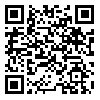Volume 67, Issue 6 (9-2009)
Tehran Univ Med J 2009, 67(6): 408-414 |
Back to browse issues page
Download citation:
BibTeX | RIS | EndNote | Medlars | ProCite | Reference Manager | RefWorks
Send citation to:



BibTeX | RIS | EndNote | Medlars | ProCite | Reference Manager | RefWorks
Send citation to:
Haeri Behbahani B, Dorosty A R, Eshraghian M R. Assessment of obesity in children: Fat Mass Index versus Body Mass Index. Tehran Univ Med J 2009; 67 (6) :408-414
URL: http://tumj.tums.ac.ir/article-1-5575-en.html
URL: http://tumj.tums.ac.ir/article-1-5575-en.html
1- Department of Nutrition & Biochemistry, Tehran University of Medical Sciences
2- Department of Nutrition & Biochemistry, Tehran University of Medical Sciences ,dorostim@tums.ac.ir
2- Department of Nutrition & Biochemistry, Tehran University of Medical Sciences ,
Abstract: (6310 Views)
Background: The sensitivity and specificity of body mass index (BMI) percentiles of CDC2000 standard which is used in determining obesity in Iranian children was compared with child real obesity identified by fat mass index (FMI) and obesity status in these children based on BMI and FMI was compared too.
Methods: Weight, height and triceps skinfold (TSF) thickness were measured in 1800 primary school children in Sabzevar, Iran. Fat mass (estimated from TSF) and weight were divided by height squared to calculate FMI and BMI, respectively. FMI at or above the 90th percentile of age- and sex- specific data in this study was considered as criterion for real obesity, and BMI≥95th and 85thResults: Based on the CDC cut-offs, the prevalence of overweight and obesity in our children were 7.9% and 4.8%, respectively. From the real obese and non-obese children identified by the FMI, 43.3% and 0.6% were identified as obese according to BMI, respectively. In addition, the sensitivity and specificity of 90th percentile of BMI to identify children as obese, were 71.1% and 98% respectively.
Conclusions: The efficacy of BMI in determining childhood obesity may be less than expected and it appears that FMI in comparison with BMI, is a better indicator of obesity in children, but more studies in this area are required.
Methods: Weight, height and triceps skinfold (TSF) thickness were measured in 1800 primary school children in Sabzevar, Iran. Fat mass (estimated from TSF) and weight were divided by height squared to calculate FMI and BMI, respectively. FMI at or above the 90th percentile of age- and sex- specific data in this study was considered as criterion for real obesity, and BMI≥95th and 85th
Conclusions: The efficacy of BMI in determining childhood obesity may be less than expected and it appears that FMI in comparison with BMI, is a better indicator of obesity in children, but more studies in this area are required.
Send email to the article author
| Rights and permissions | |
 |
This work is licensed under a Creative Commons Attribution-NonCommercial 4.0 International License. |





